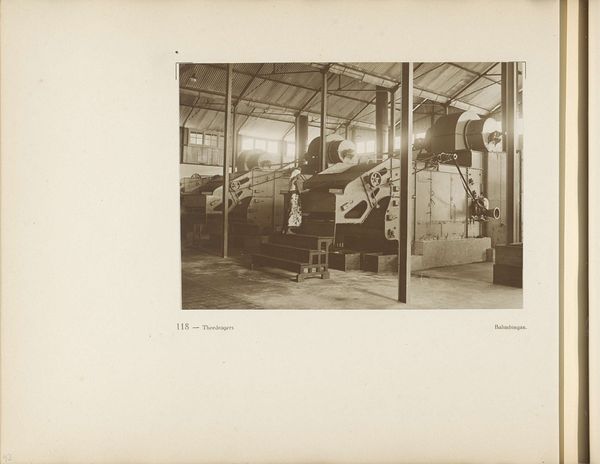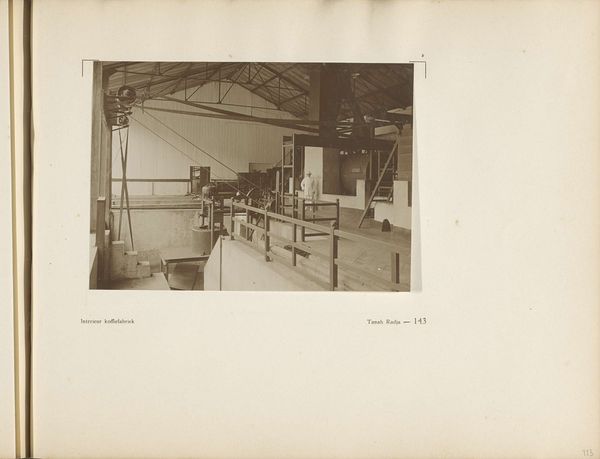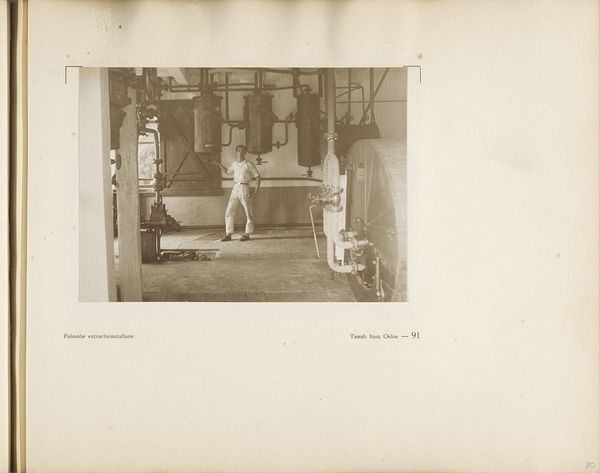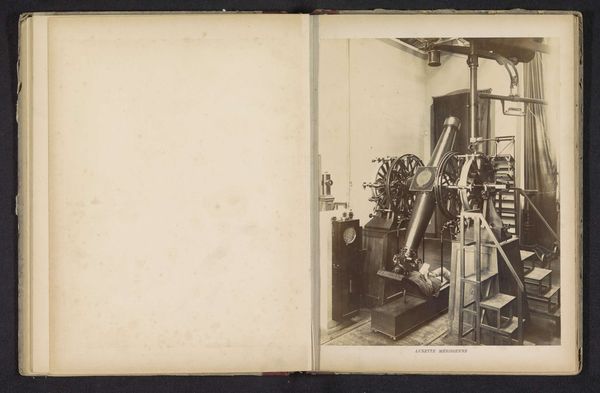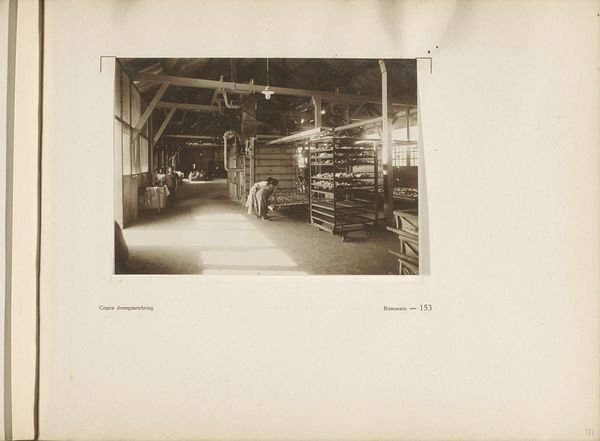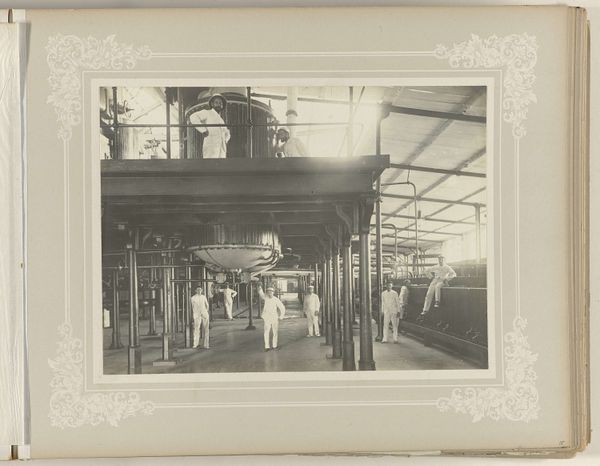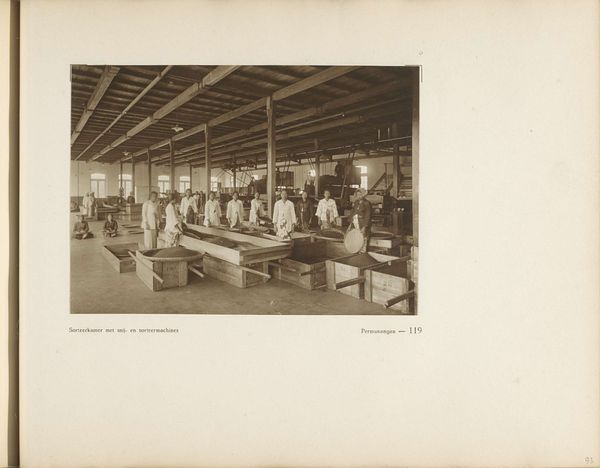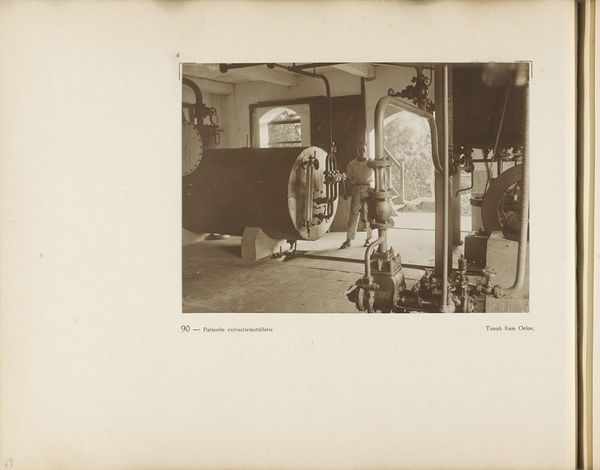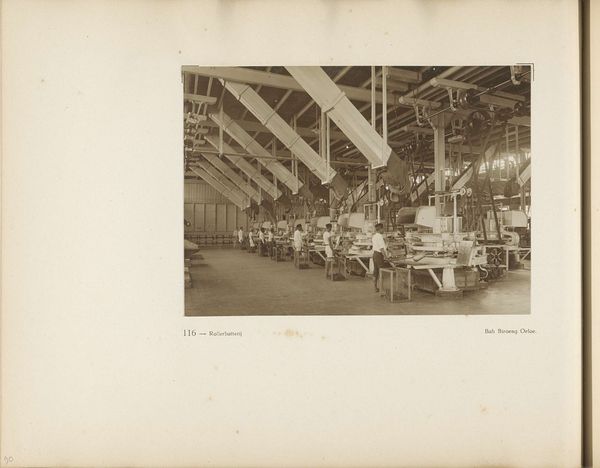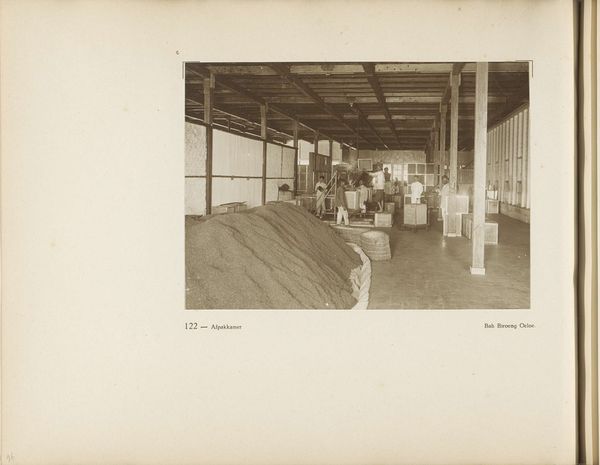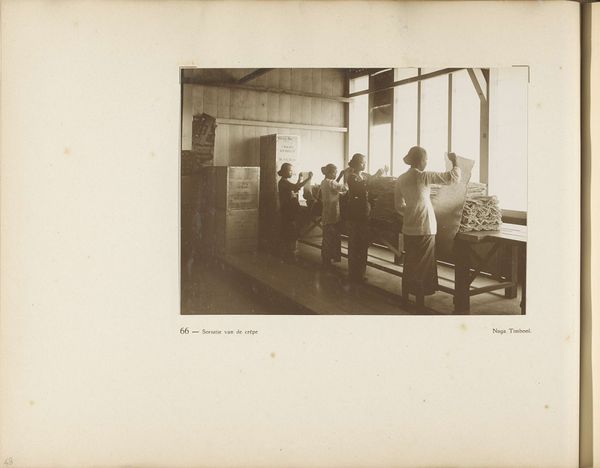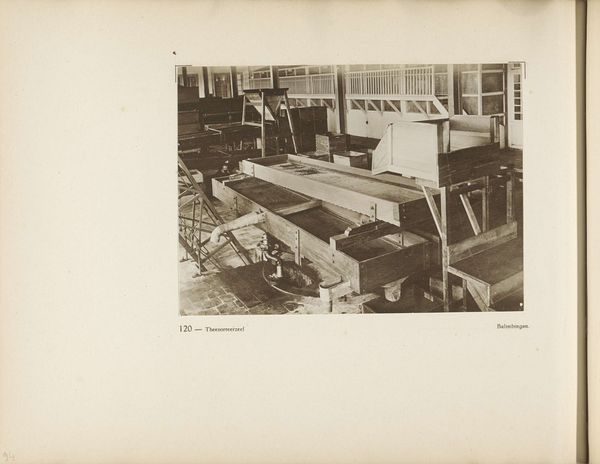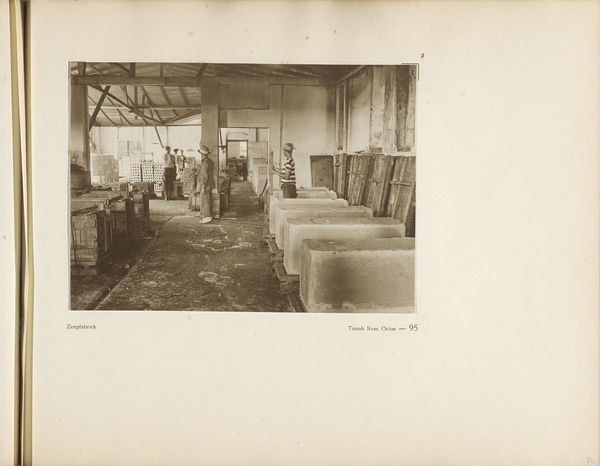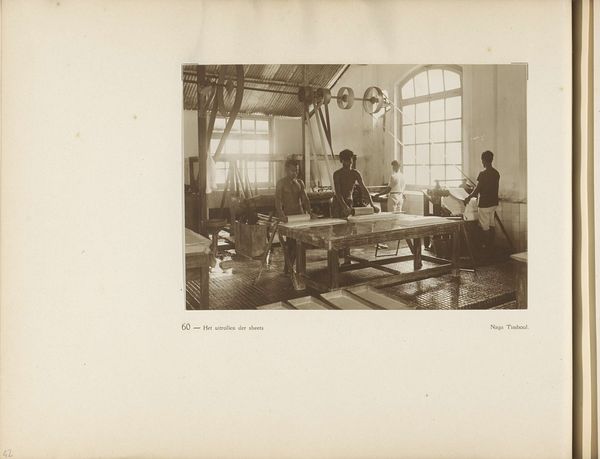
Pagina 89 van fotoboek van de Algemeene Vereeniging van Rubberplanters ter Oostkust van Sumatra (A.V.R.O.S.) c. 1924 - 1925
0:00
0:00
photography, gelatin-silver-print
#
asian-art
#
landscape
#
photography
#
gelatin-silver-print
#
realism
Dimensions: height 240 mm, width 310 mm
Copyright: Rijks Museum: Open Domain
Curator: Looking at this gelatin silver print from circa 1924-1925, entitled "Pagina 89 van fotoboek van de Algemeene Vereeniging van Rubberplanters ter Oostkust van Sumatra," or Page 89 from a photo book from the General Association of Rubber Planters on the East Coast of Sumatra, it's difficult to ignore the loaded socio-political implications inherent to this seemingly straightforward industrial scene. Editor: My first impression is one of muted activity, all grays and whites. It's a fairly standard industrial image, but that one worker staring directly at the camera almost imbues the whole photograph with a sense of hidden meaning. There is something symbolic here, almost an intentional focus, can you tell me about it? Curator: Absolutely, consider the setting. This photo originates from a book commissioned by the AVROS, a Dutch rubber plantation association in Sumatra. By that time, the Sumatra plantations were an incredibly exploitative system relying on forced labor under Dutch colonial rule. Editor: So the stark lighting and somewhat dehumanizing industrial space becomes a powerful symbol. How does the figure looking at the camera affect that? Curator: The worker's gaze becomes defiant, accusing, challenging the viewer to acknowledge the human cost of the rubber industry and colonialism more broadly. What appears as realism at first glance is actually a meticulously staged visual narrative. The inclusion of native labor reinforces the narrative of racial and economic hierarchies deeply ingrained within colonial society. Editor: Yes, that direct gaze really forces us to contemplate who benefits, and at whose expense. Thinking about that photographic process at this point, silver gelatin has this remarkable capacity to fix a fleeting moment, lending a certain gravitas even to mundane subjects. Curator: Agreed, the photographer here not only captured the rubber processing but also immortalized a pivotal chapter in colonial history and power dynamics. The artistry resides not just in its aesthetic quality, but its subtle encoding of resistance against historical amnesia. Editor: The symbolism elevates what might be overlooked as simple industrial record-keeping into a stark indictment. The interplay between subject, composition, and photographic technique is extremely evocative. Curator: The image resonates beyond a mere record, compelling a broader reflection on how colonial enterprises thrived. Editor: Yes, the visual and metaphorical textures provide an engaging invitation into conversations we absolutely need to have.
Comments
No comments
Be the first to comment and join the conversation on the ultimate creative platform.
